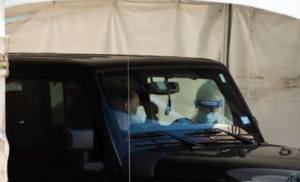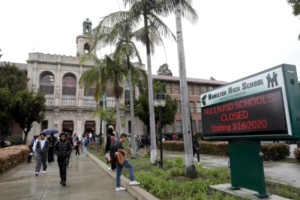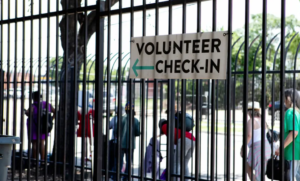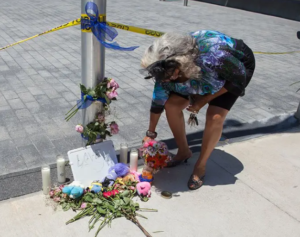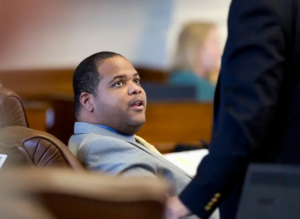Where do we grow from here?
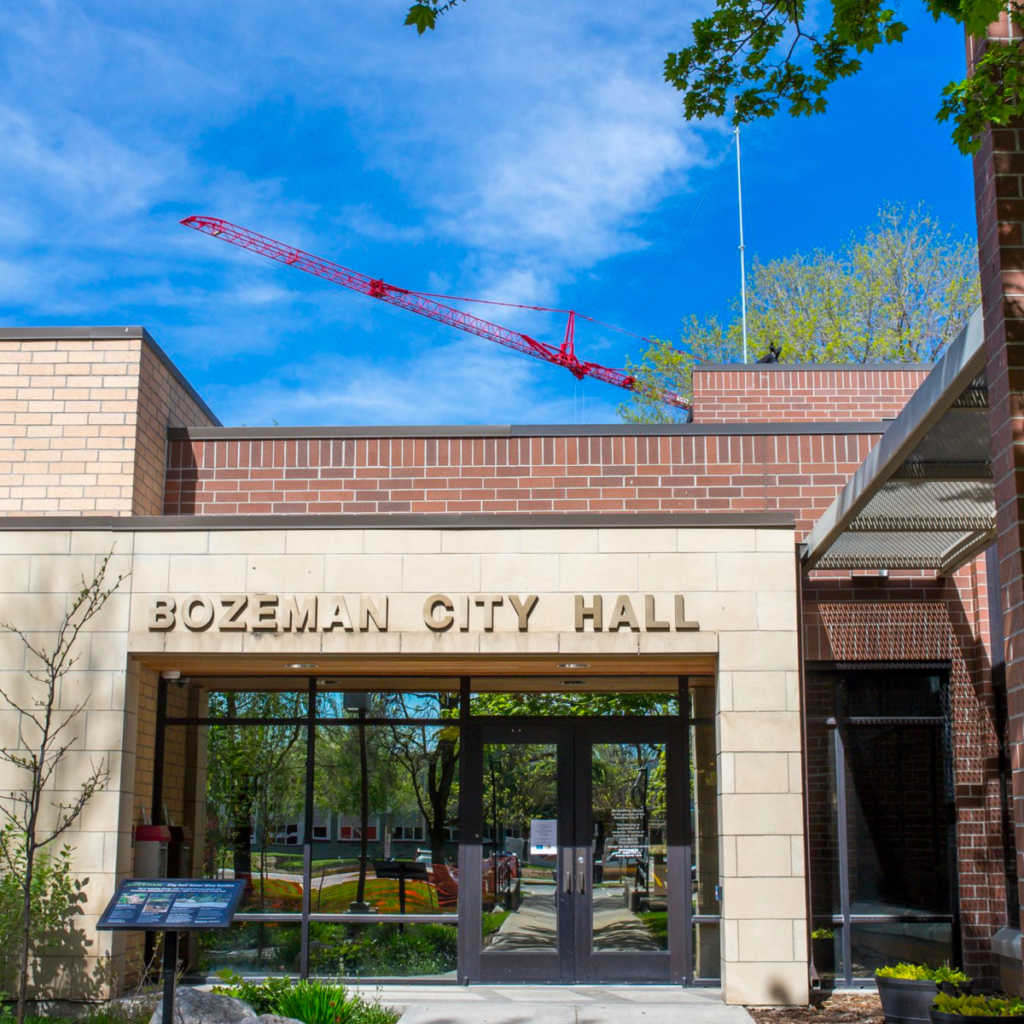
BOZEMAN — At the trailhead for the college “M” just northeast of Bozeman, the parking lot was almost full at 8 a.m. on Wednesday, May 27. The yellow of arrowleaf balsamroot spread across the hillsides as the morning sun lit the popular trail on the southern end of the Bridger Range. A half mile and 850 feet higher, the flush of spring’s green was visible across Gallatin Valley from the benches beside the white-painted rocks of the M itself. A thrum of cars echoed off the cliffs that guard the entrance to Bridger Canyon, and in the distance snow covered the mountains ringing the valley.
An hour later and five miles away on North Seventh Avenue, construction workers clocked in at job sites including a new luxury apartment building that will also house offices and commercial space where a mobile home community once sat on Tamarack Street, a new brewery at the corner of Peach Street, and a state-of-the art concert venue.
Several blocks east, past streets cascading with pink crabapple blossoms and dotted with purple lilacs, Brit Fontenot stood at his standing desk on the second floor of City Hall. Outside his office door, coffee cups dried on a dish rack in a hallway kitchenette. Just before 10 a.m, Fontenot, the city’s economic development director, put on headphones and launched the Webex call he’s held every week during the shutdown. A ping announced each new arrival as representatives from local business development organizations joined the call, as did the mayor, the airport director, school district superintendents, and leadership from the governor’s office, Montana State University, a local bank, and the manufacturing, tourism and childcare industries, among others. About 25 local, regional and state leaders have joined the hour-long call every week.
When Gov. Steve Bullock announced the shutdown order on Friday, March 13, Fontenot was just getting back into town from a spring break trip to Goblin Valley State Park in Utah, which closed a few days later.He came into the office that afternoon and set up a call with his network.
“We started talking about, ‘This group we’re pulling together has good information we need to share. We need a place to share information and knowledge, because this is happening really fast,’” Fontenot said. “Instructions and directions were changing all the time. This group came together to sort of anchor this information in somewhere credible. This group became that source of information.”
The group — which Fontenot calls the Bozeman Economic Recovery and Resiliency Team, or R and R Team, for short — has been involved with everything from supporting grassroots recovery efforts including Bozeman Strong to weighing in on the $50 billion bipartisan RELIEF for Main Street Act, which Montana Sen. Steve Daines proposed with Sens. Cory Booker and Pat Murray, and is now slated for consideration in the Senate. The team members, many of whom know each other from past or ongoing work, have also distributed up-to-date information about the Paycheck Protection Program and Economic Injury Disaster Loans, surveyed local businesses about how hard they’ve been hit, and initiated conversations about how to best support childcare operations. To help businesses reopen during phase one of the governor’s Reopening the Big Sky plan, they created and distributed kits with masks, physical distancing decals and hand sanitizer, as well as safety information.
When it became clear that tourism was going to be hit hard, a subcommittee spun off a similar call focused on that industry.
While many sectors have been hit hard by the shutdown, others, like construction, have continued full bore in Bozeman. And current trends are showing that the pandemic may accelerate the area’s already rapid growth. With upwards of $1 billion in federal funding still to be distributed to local governments and other entities in Montana, the R and R group is poised to advise elected officials on how to allocate that money locally and regionally.
“Talking about these things is the best way to understand where we are,” said Fontenot, who is originally from Lafayette, Louisiana, and came to Montana in 1992 with a political science degree from the University of Louisiana. He worked in Yellowstone, earned a master’s in history from MSU, and spent five years working for the UN in Geneva, Switzerland, before coming to work for the city in 2006. Fontenot, 49, has replaced his Cajun drawl with an intense style of information delivery that’s as deliberate as it is fast.
After a Small Business Administration and bank update opened the meeting, Rob Gilmore, executive director of the Northern Rocky Mountain Economic Development District, a nonprofit that supports economic development in Gallatin and Park counties, explained the team’s recent survey results, noting that 55% of responding businesses said they were concerned their business might may not be viable after the crisis. Gilmore also mentioned a pending $400,000 grant that would go toward business recovery, and said another community in his network had seen a spike in COVID-19 cases after reopening and is now considering another shutdown. Ken Fichtler from the Governor’s Office of Economic Development gave a status update on CARES Act grants, and airport director Brian Sprenger said the airport is continuing its expansion, with forecasts that traffic will be at about 30-35% of normal by July — down from 118% percent in January, but a boost from 3.1% of normal in April.
With Fontenot facilitating, connections were made and homework was assigned in seconds. “Everybody doesn’t get a swipe at everything,” Fontenot said. “It’s more like, ‘Here’s what’s coming down the pipeline. Here’s where we might have an opportunity to have influence. Are you interested? Is it in your wheelhouse?’”
R and R team member Paul Reichert, executive director of the nonprofit Prospera Business Network, another Bozeman-based economic development group, described the meetings as a “team sport.” But unlike similar groups in Billings, Great Falls and Missoula, which are multi-agency recovery and resiliency efforts operating under their city-county Incident Command systems, no one in this group has any authority over anyone else.
“It’s just a group of interested professionals trying to [share information and] leverage their networks and resources to try to achieve a larger goal,” Fontenot said.
Fontenot isn’t just winging it, and has in fact previously used a similar method to convene other coalitions of disparate leaders with both success and failure.
Starting in 2012, he worked with Prospera and ILX Lightwave founder Larry Johnson to convene the area’s photonics companies and form a sector development organization, the Montana Photonics Industry Alliance. The Governor’s Office of Economic Development later contributed funding, and the 30-plus photonics institutions in Gallatin Valley are now one of the industry’s significant clusters in the U.S. and a world leader in innovation.
And in 2017, Fontenot brought together seven community banks to fund installation of a $3.5 million open-access network of high-speed fiber optic cable throughout Bozeman business corridors , also benefiting schools and nonprofit and government entities.
Fontenot’s technique borrows from a method called Strategic Doing, a system for bringing together loosely connected individuals to get things done in a messy, complex environment where nobody can tell anyone else what to do. Modelled after open-source software development strategies, the idea is to teach “people to form collaborations quickly, move them toward measurable outcomes and make adjustments along the way,” according to the website for Agile Strategy Lab, which developed and teaches the method at Purdue University and the University of North Alabama. Fontenot learned about Strategic Doing through Alistair Stewart, a senior business adviser at the Montana Manufacturing Extension Center who teaches a course on it at Purdue and has been using it since 2016 to help grow the Greater Gallatin Valley Manufacturing Partnership, with support from the city.
“If you’re looking for the bigger picture, this is about realizing collaborative advantage,” said Stewart, who is also part of the R and R Team. “Everybody puts aside their ego and agendas [at the R and R meetings], because we have a clear enemy to overcome, and it’s in our best interests to collaborate very effectively.”
But it doesn’t always work. Before Fontenot started working on the photonics alliance, he attempted to similarly convene Bozeman’s outdoor industry, another economic sector with growth potential and good mid to high wages.
“I thought it would be easy — collegial people who all share similar interests,” Fontenot said. He gave it a name and a basic structure, but the Bozeman Outdoor Network never gained traction.
“None of the people I organized were able to participate any longer, and for a variety of reasons, I couldn’t get a leader to commit to the vision. I realized the outdoor sector wasn’t ready to rally around the issues I was trying to rally them around.” (Since then, another group has picked up the outdoor industry collaboration mantle.)
The R and R Team is still in the early stages of what Fontenot believes it could accomplish.
“We’re not taking swings at the home-run ball,” he said. “We’re saying, ‘Let’s get to first right now.’ That foundation will carry us forward toward the bigger ones.”
By which he means that if and when more federal money shows up, the team will be ready with information, direction and ideas for decision makers.
“What are we going to do with that money?” Fontenot asked. “How will we manage it? What are our priorities? Are we thinking about mental health as well as economic recovery? Business is important, but there are many ways to do that, so how are we going to best leverage the dollars that come into this county, and preferably more of a regional approach, so they benefit the community as a whole? [We can offer] technical assistance, education, communication, trying to come up with project ideas that might fit a different budget, infrastructure. … There’s opportunity that presents itself in the midst of destruction. We need to find the ideas and then present them to our businesses as they work through this pandemic.”
Daryl Schliem, CEO of the Bozeman Chamber of Commerce, says there has been continued interest in Bozeman during the pandemic, both from visitors and people looking to relocate.
“You took an economy that was the fastest start for airlines, business, the largest graduating class from MSU and Gallatin College, enrollment setting records at MSU, and all of a sudden March came and we come to a silent halt,” Schliem said.
Manning the chamber during the early part of phase one on May 7, Schliem, a former linebacker for the Chicago Bears and the Dallas Cowboys, was clad in a long-sleeved MSU T-shirt and white Nike ball cap instead of his usual suit and tie. “[Now] we have people buying homes from out of state and driving here from out of state. We are getting calls on a regular basis saying, ‘It says 14-day quarantine. Does it mean we can’t go hiking?’ … Houses that were selling for $315,000 yesterday went up to $325,000 [today] — in a down economy.” The Bozeman Convention & Visitors Bureau, which Schliem also leads, received a record number of requests for its visitors guide this January.
For the past 10 years, the 12 largest counties in the United States have seen their populations decline, reported Pat Barkey, a Ph.D. economist at the University of Montana’s Bureau of Business and Economic Research, in yet another Webex organized by the R and R Team on May 20.
“I think areas like Montana and particularly Gallatin Valley are going to be pretty attractive, and [that] could really accelerate some of these population movements that we’ve already seen. So, if you thought you were growing fast before, look out. … That’s very much an opportunity and to some extent a challenge. But I think a manageable challenge — a challenge a lot of other places would like to have.”
The formation of groups like the R and R Team is often spurred by crisis. Once things turn around — say the economy recovers by 2022, as Barkey projects — will the group stay together to work toward that second R of resilience? And what would long-term resilience even look like?
Reichert, from Prospera, said that’s not yet clear.
“What kinds of things do we want to create in the next three, five, seven years that put us in a place that’s really stronger in Montana going forward?” Reichert said. “It’s not just about getting through COVID.”
At the top of the R and R Team’s list to consider are high housing costs and the limited number of childcare centers. After bringing Tori Sproles from the nonprofit childcare support agency Child Care Connections onto the team a few weeks ago, the group was able to make sure all providers in Gallatin, Park and Madison counties had support in applying for the governor’s $10 million in grant monies, which were part of the first round of CARES Act funding. More recently, they’ve discussed the potential to incentivize expansion of existing childcare facilities or offering small-business loans to create new facilities. At the next meeting, Ellen Beck, the government affairs director at the Gallatin Association of Realtors, will join the team.
As Fontenot said, “It’s about us, and how we come out of this stronger than we came into it.”
The Article was originally published on Where do we grow from here?
